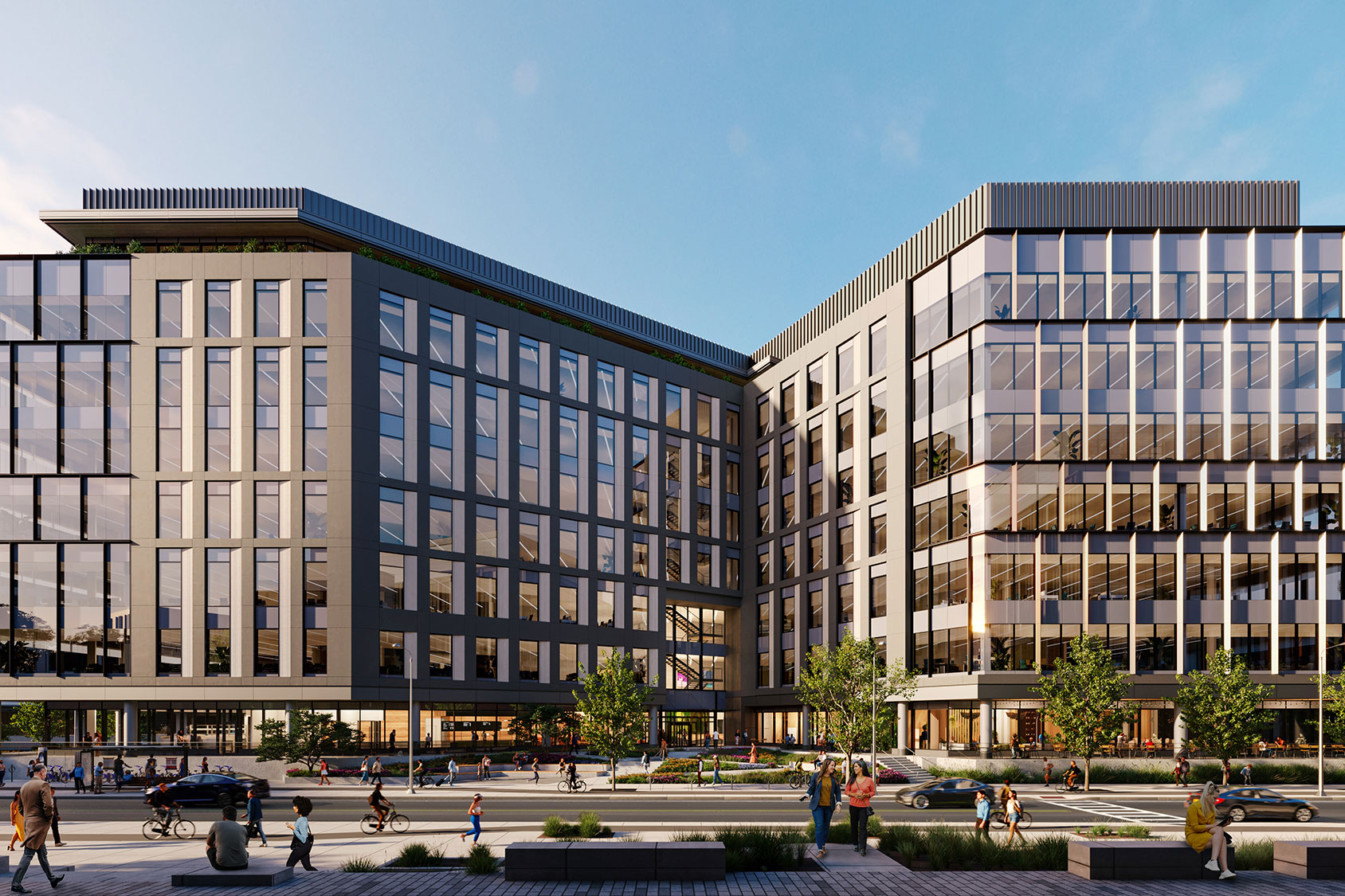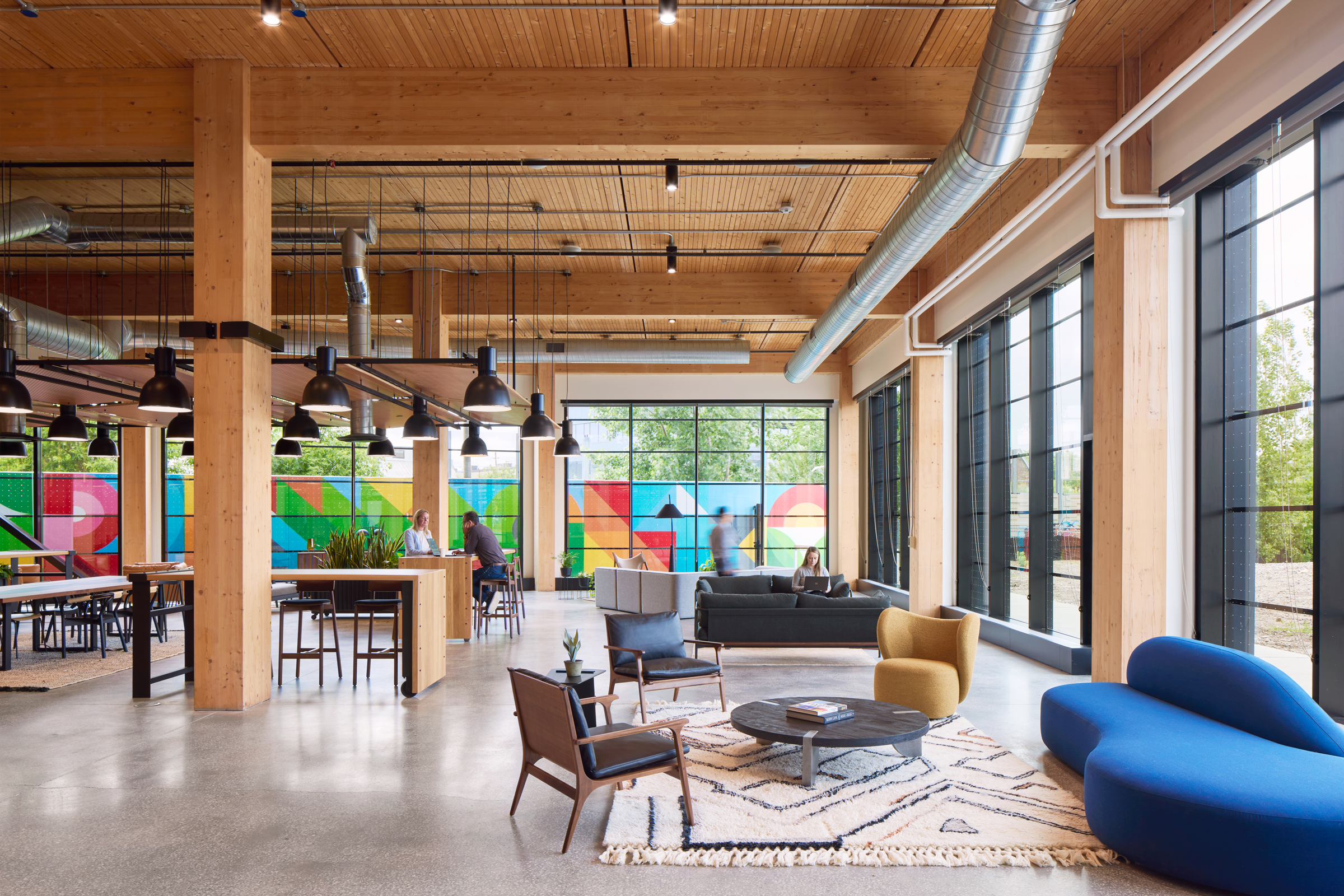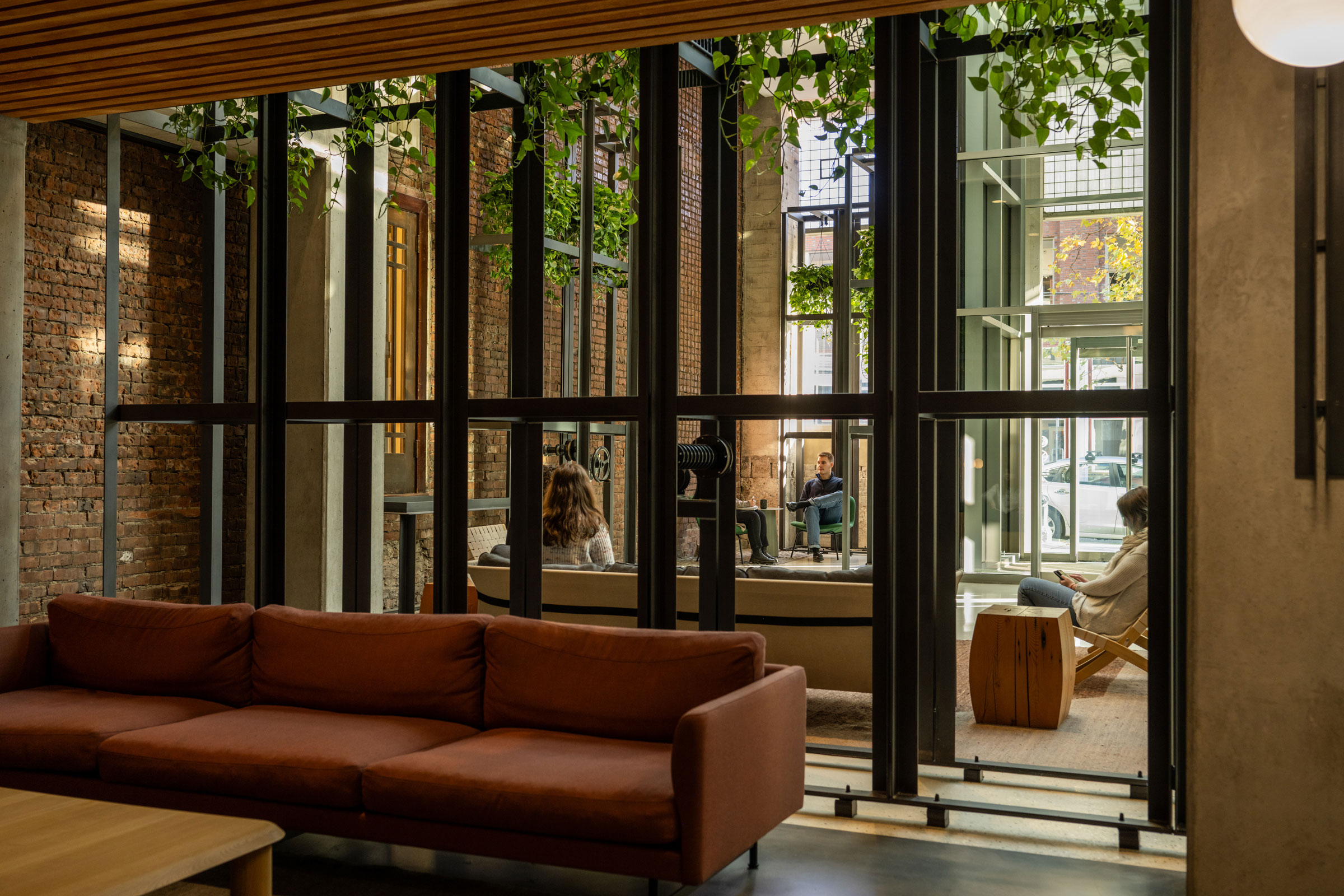Story at a glance:
- Buildings are key actors in a global effort to reverse environmental degradation and foster ecological balance.
- Regenerative design reimagines how we construct, use, and interact with the built environment.
- Buildings designed with regenerative principles are better equipped to withstand weather-related disasters.
The year 2024 was the warmest in recorded modern history. As climate change accelerates the built environment must evolve to meet challenges that extend far beyond conventional sustainability. Buildings are no longer just structures for human habitation or work; they are key actors in a global effort to reverse environmental degradation and foster ecological balance.
In this era regenerative design has emerged as a transformative approach that reimagines how we construct, use, and interact with the built environment. Unlike traditional sustainable design, which focuses on minimizing harm, regenerative design goes a step further by actively restoring and improving natural systems.
Regenerative design has gained traction as both a philosophy and a practical strategy for climate resilience. By integrating innovative materials, technologies, and processes, regenerative buildings do more than reduce their environmental footprint—they contribute positively to the ecosystems and communities they inhabit. From enhancing biodiversity to addressing energy poverty, regenerative design holds the potential to create an adaptable, self-sustaining, and beneficial built environment.
Moving Beyond Sustainability: The Regenerative Paradigm
For decades sustainability has been the cornerstone of green building initiatives. Standards like LEED and net zero certifications have encouraged energy efficiency, water conservation, and waste reduction in building projects.
However, these measures often focus on reducing negative impacts rather than creating positive ones. While sustainability aims to limit resource consumption and mitigate environmental harm, regenerative design focuses on actively restoring ecosystems and communities.
This shift in perspective is critical in the face of increasingly severe climate events. The World Meteorological Organization reported a fivefold increase in weather-related disasters over the past 50 years, resulting in significant economic and human losses. Buildings designed with regenerative principles are better equipped to withstand these challenges as they integrate systems and materials that can adapt to changing conditions while supporting ecological recovery.
Core Commitments of Regenerative Design
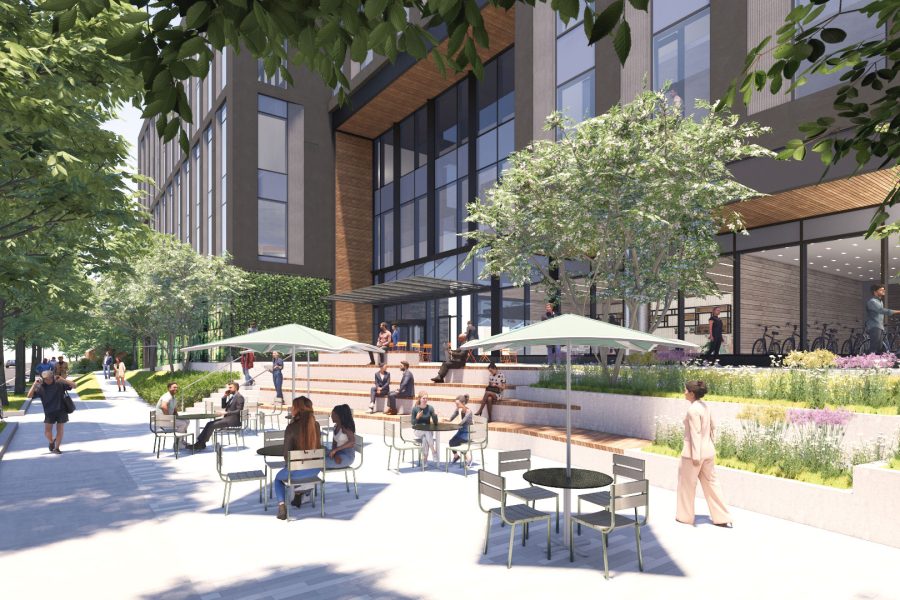
SGA is designing the Innovation Square (ISQ3) project to be a seven-story research and development facility with onsite amenities like a café, fitness center, roof deck, conference and event space, and outdoor public seating. Rendering courtesy of SGA
Regenerative design is rooted in several guiding principles that redefine how buildings interact with their surroundings. These principles go beyond technical efficiency and incorporate a holistic understanding of environmental, social, and economic interdependencies.
1. Designing for Longevity and Adaptability
Regenerative buildings are envisioned as living systems capable of evolving over centuries. This long-term perspective requires architects and engineers to prioritize adaptability and resilience in their designs.
For example, modular construction techniques and flexible layouts enable buildings to serve multiple purposes over time, reducing the need for demolition and new construction.
Adaptive reuse projects, such as the transformation of historic warehouses into modern office spaces or technically advanced life sciences facilities, demonstrate how architects, engineers, and developers can revitalize existing structures to meet contemporary needs while preserving cultural heritage.
2. Enhancing Ecosystems Through Design
One of the defining features of regenerative design is its ability to enhance rather than deplete natural ecosystems. Green roofs, urban forests, and wetland restoration are just a few strategies contributing to biodiversity and ecological health.
For instance, the Bosco Verticale in Milan integrates more than 900 trees and 20,000 plants into its facade, creating a vertical forest that improves air quality, reduces urban heat, and provides habitats for wildlife.
3. Energy Surplus and Circular Resource Use
Regenerative buildings aim to produce more energy than they consume, contributing excess energy back to the grid. Engineers and designers increasingly use solar panels, wind turbines, and geothermal systems to achieve this goal.
Additionally, regenerative design emphasizes closed-loop systems where materials are reused, recycled, or composted. For example, waste generated during construction can be processed into biomass energy or repurposed as raw material for future projects.
4. Climate-Responsive Materials
Material innovation plays a critical role in regenerative design. Fast-growing resources like bamboo and cork and technologies like biochar and carbon-sequestering concrete help reduce embodied carbon while supporting circular economies. These materials minimize environmental impact and contribute to the building’s ability to adapt and regenerate.
Mass timber is a low-carbon alternative in urban development and is being adopted even in high-rise buildings. Its carbon-sequestering properties help reduce embodied carbon in construction as an alternative to carbon-heavy concrete and steel.
5. Community Integration and Social Equity
Regenerative design prioritizes the well-being of both people and the planet. By integrating community needs into the design process, projects can address food security, housing affordability, and equitable access to resources. Detroit’s urban “agrihood,” a model for sustainable food production in underserved neighborhoods, exemplifies how regenerative practices can create thriving, resilient communities.
6. Eliminating Landfills
The goal of zero waste is central to regenerative design. By designing buildings as self-sustaining systems, we can transform waste into resources that support on-site ecosystems. For example, composting organic waste can nourish rooftop gardens, while rainwater harvesting systems provide irrigation for landscaping.
Measuring Success in Regenerative Design
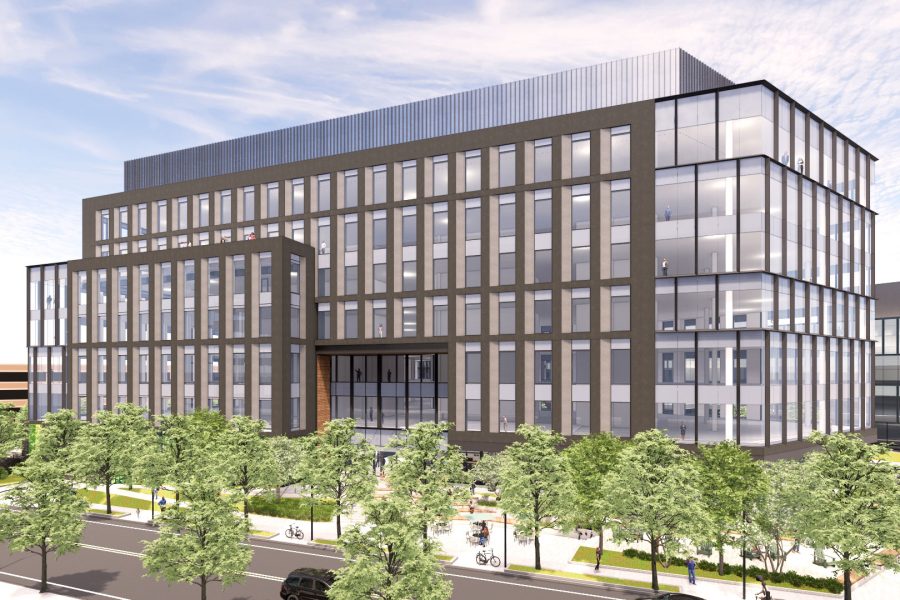
SGA and Related Beal are transforming the Innovation Square (ISQ3) site in Boston’s Eastern Seaport within the Raymond L. Flynn Marine Park. Rendering courtesy of SGA
Success in regenerative design is not just about meeting energy efficiency targets or achieving certification; it’s about creating lasting, positive impacts on the environment and society. Sustainability metrics include energy usage intensity (EUI), embodied carbon, and biodiversity indices to evaluate a building’s performance. We’re seeing these principles come to life in projects like Innovation Square 3 (ISQ3) in Boston, a carbon net zero-ready lab building demonstrating how regenerative design can meet the needs of high-performance industries while advancing environmental goals.
Challenges and Opportunities
While the benefits of regenerative design are clear, its widespread adoption faces several challenges. High upfront costs, limited access to advanced materials, and regulatory barriers can hinder implementation. However, as technologies like 3D printing, AI-driven design, and digital twin modeling become more accessible, these obstacles are diminishing.
Additionally, the demand for climate-resilient infrastructure drives innovation in the construction industry. According to Precedence Research reports, the green building market is expected to grow to over $1,374 billion by 2034, expanding at a yearly rate of 9.3% from 2024 to 2034.
This growth reflects a growing recognition of regenerative practices’ economic and environmental value.
The Path Forward
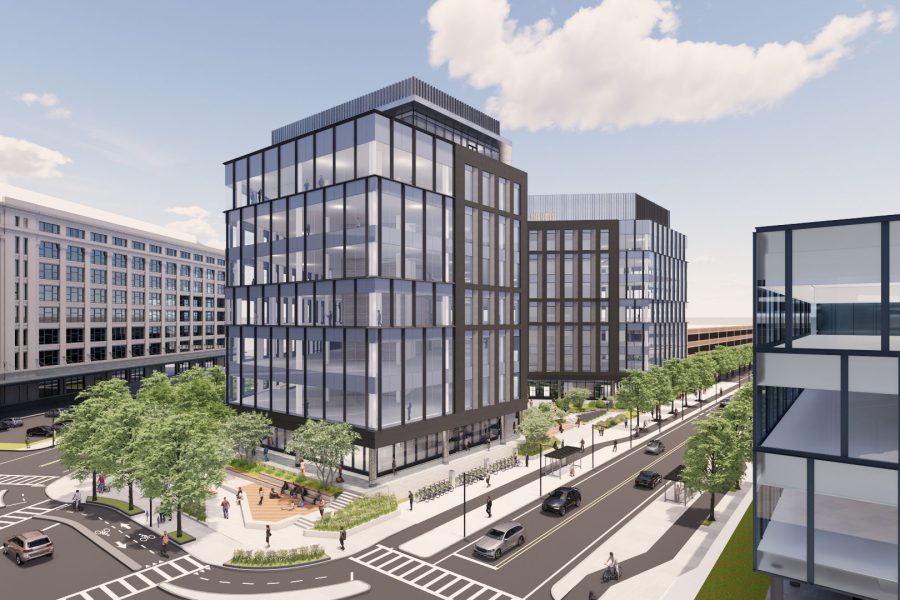
The Innovation Square 3 (ISQ3) project in Boston is a carbon net zero-ready lab building. Rendering courtesy of SGA
The industry must embrace a paradigm shift to fully realize regenerative design’s potential. This adoption involves innovating new technologies and materials and fostering a culture of collaboration among architects, engineers, policymakers, and community stakeholders.
Education and advocacy are essential to building awareness and support for regenerative principles, particularly among government and industry decision-makers.
The transition to regenerative design is not without its challenges, but the rewards are profound. By reimagining the relationship between buildings and their environments, we can create spaces that are resilient to climate change and restorative for generations to come.
Facility managers, developers, and design professionals have a clear call to action: It’s time to think beyond sustainability and embrace regeneration as a guiding principle. Together, we can build a future in which the built environment serves as a catalyst for ecological renewal and community well-being.

